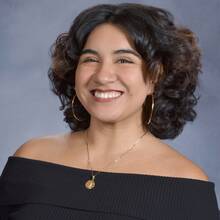What do a professional mime, a 7-year-old girl and a recent college graduate have in common? You can find them all at Saturday morning rehearsal for a silent Stations of the Cross play.
Every Saturday for the past month I, along with 15 other parishioners at St. Paul the Apostle Church in Manhattan, gathered and rehearsed in preparation for our tableau performance of the Stations of the Cross. The participants ranged in age from the aforementioned 7-year-old (who sported a tiara when her birthday coincided with one of our rehearsal days) to an 80-year-old woman (who had to miss one rehearsal to attend her granddaughter’s wedding). No one in the group––besides our director––was a professional actor, but our excitement for the liturgy and eagerness to share it with the rest of our community bonded us together and fueled our rehearsals.
It also offered words of encouragement that have animated my Lenten season. Referring to our stage fright and inevitable mistakes during rehearsals, Tony Lopresti, the professional mime, choreographer, director (and fellow parishioner) noted:
“Sometimes, after a few days, we might start to think, ‘Oh, no! Why did I ever do that!’ It’s normal to feel that way but please don’t succumb to that. Move past it and you’ll have a very good experience.”
As the director and choreographer of our performance, Tony instructed us through warm-ups, stretches and finally the poses for the tableaus we would perform for each of the stations. As we navigated nervousness and performance jitters, Tony reminded us that we had all felt inclined to sign up for the performance for a reason, and that it may be the Holy Spirit calling us to serve God’s people in this way this Lent. Tony’s words grounded me during my first rehearsal and kept me coming back week after week.
As a trained mime, Tony taught us how different movements could help bring our performance to life. For three (sometimes four) hours at a time, our rehearsals included reviewing mime techniques and discussing what we believed was Jesus’ emotional state on his road to Golgotha. I was taken aback by the openness of my fellow actors, each sharing their own interpretations and perspectives on how they would feel if they were a follower of Jesus during his last few hours. But this emotional work was vital.
Lent, as a season of penance and preparation, served as the perfect time to push myself out of my spiritual and physical comfort zone––both for my own sake and for those coming to the performance.
Our many hours of rehearsal culminated in our performance on April 11, during which we presented our tableau to a crowd of parishioners, loved ones and a few visitors who had wandered into the church unaware of what they were about to witness. The ultimate goal of our performance was to help the congregation connect with the Stations of the Cross through what we described as an “immersive and prayerful experience.”
During the stations, performers and audience alike moved around the church. Each new location had its own set of poses that we would hold to create an image. Our roles changed at each station, each of us taking on a new persona, with no one person playing Jesus. His crown of thorns and cross passed from head to head, shoulder to shoulder. Only Mary’s role was consistently played by the same person, differentiated from the rest with the use of a black mantilla over her hair.
The fourth station—Jesus meets his afflicted mother—was my personal favorite. Jesus was played by a little boy in this station. He leaned the large wooden cross over his shoulder and lunged forward toward Mary, who reached out but was held back by a soldier. I was another soldier in this station, and my pose meant I had my back to Jesus and Mary.
During rehearsals, I would sneak a peek over my shoulder, and I was always immensely moved by the determination of the little boy. With the cross twice his height and surely weighing at least as much as he does, it would have been understandable for him to ask for his role to be changed. Or to at least complain about the weight and burden of the cross every time he held this position. But he never faltered. His determination and sacrifice served as true Lenten inspiration.
The experience, as a performer, was powerful. At every station, I prayed––mostly meditating on the station’s events, but on occasion also asking God to give me the strength to not topple over while holding a particularly difficult pose. I also was touched by the ways in which our little group was a reflection of the larger Catholic Church. There was a young family with two young children; older folks who would often speak fondly of their children and grandchildren; a woman who spoke mostly Spanish, and needed translation help throughout our time together; young adults new to the parish. Our different backgrounds and faith journeys made the experience, both in rehearsal and on the day of the big performance, all the richer.
During the performance, in moments when I felt the heat of my timidity rising to my cheeks, I remembered another quote from Tony:
“For us, slow motion is a prayer.”
I was fascinated by this idea. During our warm-ups, we would take time to move our bodies in painfully slow motion, focusing on the ways our bodies moved and felt when we were forced to slow down. He was there when we stretched and laughed together, when tears flowed and hugs were shared, and especially when we performed. In this careful examination of body and mechanics, it was possible to find God in the slow movement and find inspiration to continue to find him in all the moments ahead.







